I am splitting up the yearly review into two parts, first nationally published fiction by Mormon authors, then in February, in part 2, I will cover fiction published in the Mormon and independent markets.
Here are my 2000, 2001, 2002, 2003, 2004, 2005, and 2006-2007 reviews. My 2008 (Part 1a, 1b, 2) 2009 (Part 1, 2), and 2010 (Part 1, 2) reviews appeared at A Motley Vision, and then in the years after that they appeared on this blog: 2011 (part 1, 2), 2012 (part 1, 2), 2013 (part 1, 2), and 2015.
I start with the surprising flow of Mormon literary fiction that appeared in the second half of the year. Then I will look at best-sellers and particularly well reviewed juvenile and speculative fiction books. And continue from there.
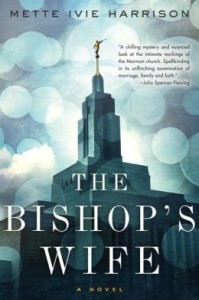 For many years Mormon literature fans have been waiting for (quoting Theric) “A novel (1) about active Mormons (2) written by an active Mormon (3) is placed before a national audience where it makes a notably broad impact on discourse.” There have been several novels in recent years that met two of those criteria, but not one that met all three. In December we finally got one, Mette Ivie Harrison’s The Bishop’s Wife. Harrison has produced a murder mystery that explores Mormon beliefs, practices, and culture at the center of the discussion. She goes beyond stereotypes, creating complex, fleshed-out characters, whose relationships with each other are all informed to one degree or another by their membership in the Church. Although some have criticized what they see as an info dump explaining Mormon practices through internal dialogue early in the book, apparently requested by the publisher, overall it is an exciting development to see a real insider provide her take on Mormon culture to the broader world. Also, her New York City publisher decided to make promoting the book a priority, ensuring that unlike other such books, The Bishop’s Wife will reach a wider audience. Hopefully some of those readers will then seek out more literature about Mormons. Harrison has had several YA fantasy novels published in the past, this is her first adult mystery novel. It will be the first in a series. Don’t miss Theric’s reviews and discussion of the novel at A Motley Vision.
For many years Mormon literature fans have been waiting for (quoting Theric) “A novel (1) about active Mormons (2) written by an active Mormon (3) is placed before a national audience where it makes a notably broad impact on discourse.” There have been several novels in recent years that met two of those criteria, but not one that met all three. In December we finally got one, Mette Ivie Harrison’s The Bishop’s Wife. Harrison has produced a murder mystery that explores Mormon beliefs, practices, and culture at the center of the discussion. She goes beyond stereotypes, creating complex, fleshed-out characters, whose relationships with each other are all informed to one degree or another by their membership in the Church. Although some have criticized what they see as an info dump explaining Mormon practices through internal dialogue early in the book, apparently requested by the publisher, overall it is an exciting development to see a real insider provide her take on Mormon culture to the broader world. Also, her New York City publisher decided to make promoting the book a priority, ensuring that unlike other such books, The Bishop’s Wife will reach a wider audience. Hopefully some of those readers will then seek out more literature about Mormons. Harrison has had several YA fantasy novels published in the past, this is her first adult mystery novel. It will be the first in a series. Don’t miss Theric’s reviews and discussion of the novel at A Motley Vision.
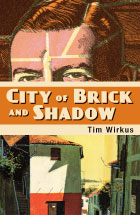 It is inevitable to compare The Bishop’s Wife to another Mormon literary mystery published just weeks earlier, Tim Wirkus’ debut novel City of Brick and Shadow. In telling the story of a pair of American missionaries in a Brazilian slum trying to solve a mystery of a disappeared convert, Wirkus takes a different approach from Harrison. He shows the practices of the Mormon characters through action rather than internal monologue. Also, while the Mormons in The Bishop’s Wife are among the leaders of a Mormon-dominated Utah community, the missionaries in City of Brick and Shadow, an eccentric Holmes-type and a put-upon Watson, are nearly alone in a world that they can barely comprehend. It is a thrilling tale, mixing a well-constructed mystery plot and unanswerable “mysteries” and mythic elements. It was published by a national crime fiction house, but it appears to have much less juice behind it, and is less likely to be a book club selection. Wirkus is a graduate student at the University of Southern California Literature and Creative Writing Department, which has produced several young Mormon authors in the last few years. As much as I liked The Bishop’s Wife, City of Brick and Shadow is my Mormon novel of the year.
It is inevitable to compare The Bishop’s Wife to another Mormon literary mystery published just weeks earlier, Tim Wirkus’ debut novel City of Brick and Shadow. In telling the story of a pair of American missionaries in a Brazilian slum trying to solve a mystery of a disappeared convert, Wirkus takes a different approach from Harrison. He shows the practices of the Mormon characters through action rather than internal monologue. Also, while the Mormons in The Bishop’s Wife are among the leaders of a Mormon-dominated Utah community, the missionaries in City of Brick and Shadow, an eccentric Holmes-type and a put-upon Watson, are nearly alone in a world that they can barely comprehend. It is a thrilling tale, mixing a well-constructed mystery plot and unanswerable “mysteries” and mythic elements. It was published by a national crime fiction house, but it appears to have much less juice behind it, and is less likely to be a book club selection. Wirkus is a graduate student at the University of Southern California Literature and Creative Writing Department, which has produced several young Mormon authors in the last few years. As much as I liked The Bishop’s Wife, City of Brick and Shadow is my Mormon novel of the year.
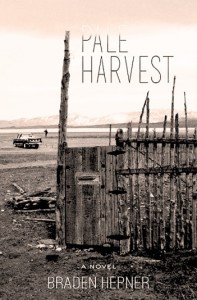 A close contender for most impressive novel is Braden Hepner’s Pale Harvest. Another first novel, this by a young BYU-Idaho faculty member, it is set in a dying farming town in Cache Valley, Utah. Hepner’s prose is beautiful, but the world he presents is quite bleak. He appears to have been influenced by Cormac McCarthy. He opens the book with a slow description of the landscape and difficult life in northern Utah, almost daring readers to move on to something more agreeable. But push through that, and there is a remarkable story of hard work and beautiful writing waiting for you. Mormonism plays a role in the novel, although not as central as in the two mystery novels. It received starred reviews from Publishers Weekly, Kirkus, and Library Journal. The publisher, Torrey House Press, is a Utah-based company that has been producing regional and environmental-concerned books, including Steven L. Peck’s The Scholar of Moab.
A close contender for most impressive novel is Braden Hepner’s Pale Harvest. Another first novel, this by a young BYU-Idaho faculty member, it is set in a dying farming town in Cache Valley, Utah. Hepner’s prose is beautiful, but the world he presents is quite bleak. He appears to have been influenced by Cormac McCarthy. He opens the book with a slow description of the landscape and difficult life in northern Utah, almost daring readers to move on to something more agreeable. But push through that, and there is a remarkable story of hard work and beautiful writing waiting for you. Mormonism plays a role in the novel, although not as central as in the two mystery novels. It received starred reviews from Publishers Weekly, Kirkus, and Library Journal. The publisher, Torrey House Press, is a Utah-based company that has been producing regional and environmental-concerned books, including Steven L. Peck’s The Scholar of Moab.
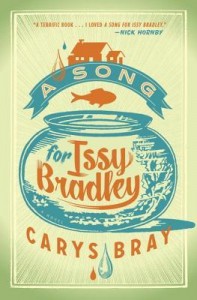 From Britain came another debut literary novel, Carys Bray’s A Song for Issy Bradley.It tells the story of an English Mormon family that suffers the death of a four-year-old child. It has received strong reviews on both sides of the Atlantic, and was named as one of four finalists for the 2014 Costa first novel prize. The Kirkus review states, “Each chapter follows a different Bradley, and Bray brings her characters to complicated, messy life with her tremendous power for empathy. It’s rare to see religious faith explored so deeply in popular fiction, and though Ian [the father]’s nearly unquestioning devotion can make him seem like the villain at times, Bray does a remarkable job of illuminating each character’s hopes and fears. An absorbing, beautifully written debut novel with surprising moments of humor.” Julie M. Smith at Times and Seasons wrote, “The character depiction and development is top-notch. The plot is, in turns, hilarious and heartbreaking. The family’s Mormonism doesn’t just permeate every scene, but every line, every thought. And every bit of Mormonism is here: our agony over our past and present, our faith and foibles, our cultural quirks and so much more. The author’s info announces that she has left the church and while your book group may have trouble with the one moderately graphic sex scene and f-bombs, I felt this was an ultimately faith- and culture-affirming book.”
From Britain came another debut literary novel, Carys Bray’s A Song for Issy Bradley.It tells the story of an English Mormon family that suffers the death of a four-year-old child. It has received strong reviews on both sides of the Atlantic, and was named as one of four finalists for the 2014 Costa first novel prize. The Kirkus review states, “Each chapter follows a different Bradley, and Bray brings her characters to complicated, messy life with her tremendous power for empathy. It’s rare to see religious faith explored so deeply in popular fiction, and though Ian [the father]’s nearly unquestioning devotion can make him seem like the villain at times, Bray does a remarkable job of illuminating each character’s hopes and fears. An absorbing, beautifully written debut novel with surprising moments of humor.” Julie M. Smith at Times and Seasons wrote, “The character depiction and development is top-notch. The plot is, in turns, hilarious and heartbreaking. The family’s Mormonism doesn’t just permeate every scene, but every line, every thought. And every bit of Mormonism is here: our agony over our past and present, our faith and foibles, our cultural quirks and so much more. The author’s info announces that she has left the church and while your book group may have trouble with the one moderately graphic sex scene and f-bombs, I felt this was an ultimately faith- and culture-affirming book.”
There were also Mormon literary novels by Douglas Thayer (Zarahemla), Paul M. Edwards (Signature), and Linda Sillitoe (Zarahemla) in 2014, but I will talk about those in the Mormon market section.
I have estimated a ranking of the best selling Mormon-authored novels in 2014, using an amalgamation of the New York Times, Publishers Weekly, and USA Today best-seller lists. The rankings are my guesses, and as my guesses become less certain farther down the list, I place the books in the lower half on two tiers, in which the books could well be in any order. Books published before 2014 are included in the list.
1. James Dashner. The Maze Runner
696,021 units sold, on all the lists all year long, reaching #3 at USA Today (56 weeks), and spending 6 weeks at #1 on the NYT Children’s series list.
2. James Dashner. The Kill Order
226,317 units sold.
3. Orson Scott Card. Ender’s Game
On the Publishers Weekly Science Fiction top ten list all year.
4. James Dashner. The Scorch Trials
On the USA Today list most of the year.
5. James Dashner. The Death Cure
On the USA Today list most of the year.
6. Brandon Sanderson. Words of Radiance
Reached NYT Hardcover #1, PW Hardcover #1, USA Today #2.
7. Shannon Hale. Ever After High #1: The Storybook of Legends
PW Childrens, reached#10. Had a very long tail, stayed on the list for months.
8. Richard Paul Evans. The Mistletoe Promise
PW Hardcover #4, NYT Hardcover #4
9. Richard Paul Evans. Micheal Vey #4: Hunt for Jade Dragon
USA Today #13, PW Childrens #2
10. Shannon Hale. Ever After High #2: The Unfairest of them All
PW Childrens list for 13 weeks.
11. Shannon Hale. Ever After High #3: The Most Wonderlandiful World
12. Christine Feehan. Air Bound
13. Christine Feehan. Dark Wolf
14. Richard Paul Evans. Walking on Water
15. RaeAnne Thayne. Snow Angel Cove
16. Shannon Hale. Ever After High: Once Upon a Time
17. Sherryl Woods and RaeAnne Thayne. Safe Harbor/ A Cold Creek Homecoming
18. Brandon Mull. Sky Raiders
19. Shannon and Dean Hale. The Princess in Black
2o. Brenda Novak, RaeAnne Thayne, others. A Sweet Life Boxed Set
21-29. Brandon Mull. Spirit Animals #1: Wild Born
RaeAnne Thayne. The Christmas Ranch
Christine Feehan. Dark Lycan
Robert Jordan and Brandon Sanderson. A Memory of Light
Shannon Hale. Spirit Animals #4: Fire and Ice
Brandon Mull. Rouge Night
RaeAnne Thayne. Wild Iris Ridge
Brandon Sanderson. Steelheart
James Dashner. The Rule of Thoughts
30-43. Jennifer Nielsen. The Shadow Throne
Ally Condie. Atlantia
James Dashner. The Eye of Minds
Brenda Novak. Come Home to Me
Anne Perry. Blood on the Water
Anne Perry. Death on Blackheath
Dan Wells. Ruins
Orson Scott Card and Aaron Johnston. Earth Awakens
Charlie N. Holmberg. The Paper Magician
Jessie Humphries. Killing Ruby Rose
Sara B. Larson. Defy
Kasie West. On the Fence
Larry Correia. Monster Hunter Nemesis
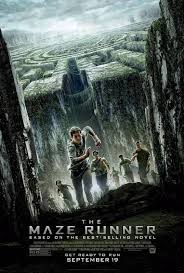 Far and away the best-selling Mormon author of the year was James Dashner. His 2009 YA dystopian novel The Maze Runner was the best-selling Mormon-authored novel, with 696,021 units sold in 2014, the 11th highest selling juvenile book of the year in the United States. The series was on the New York Times Children’s Series bestseller list all year, including six weeks at #1 and 23 weeks at #2. A major reason for the high sales was the release of the film version in September. The film was a strong commercial success, making $340 million worldwide against its budget of $34 million, ensuring a 2015 sequel. This was much better than the Ender’s Game film in 2013, which grossed a much smaller $125 million, and does not appear to be leading to a sequel. I estimate the 2012 Maze Runner prequel The Kill Order to be the second highest selling novel of the year (226,317 units). Maze Runner sequels also were in my #4 and #5 spots, after perennial best-seller Ender’s Game. Dasher also had two books in his new YA science fiction The Morality Doctrine series in the 20s and 30s.
Far and away the best-selling Mormon author of the year was James Dashner. His 2009 YA dystopian novel The Maze Runner was the best-selling Mormon-authored novel, with 696,021 units sold in 2014, the 11th highest selling juvenile book of the year in the United States. The series was on the New York Times Children’s Series bestseller list all year, including six weeks at #1 and 23 weeks at #2. A major reason for the high sales was the release of the film version in September. The film was a strong commercial success, making $340 million worldwide against its budget of $34 million, ensuring a 2015 sequel. This was much better than the Ender’s Game film in 2013, which grossed a much smaller $125 million, and does not appear to be leading to a sequel. I estimate the 2012 Maze Runner prequel The Kill Order to be the second highest selling novel of the year (226,317 units). Maze Runner sequels also were in my #4 and #5 spots, after perennial best-seller Ender’s Game. Dasher also had two books in his new YA science fiction The Morality Doctrine series in the 20s and 30s.
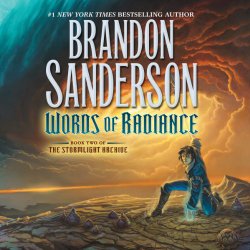 In a bestseller list dominated by YA and middle grade books, Brandon Sanderson’s Words of Radiance, the second in his high fantasy Stormlight Archives series, is another best-seller, as well as receiving strong reviews. Library Journal, in a starred review, wrote, “Sanderson’s skill at worldbuilding is unmatched, and in the Stormlight Archive series he has developed an innovative magical system and combined it with rich, complex characters to create a compelling story. The eagerly awaited sequel exceeds expectations. This developing epic series is a must-read for all fantasy fans.”Orson Scott Card wrote, “They’re good because he understands human nature, and writes compelling characters into exciting, moving, intelligent stories . . . Sanderson, like George R.R. Martin, is of the new generation of fantasists who borrow relatively little from Tolkien’s Middle Earth and instead do their world-creation according to the principles of science fiction. Magic is treated systematically, as if it were a science, and as a result, readers begin to understand the rules and limitations under which magic functions. Without such rigor, it’s hard to tell a powerful story, because, as Judson Jerome once said to me, “If anything can happen, who cares what does happen?” Nobody handles magic more rigorously than Sanderson, and as I tell my writing students, the more detailed the rules become, the more story possibilities emerge. Thus the storytelling in The Stormlight Archives is lush and endlessly surprising, yet never feels false or contrived.” It was named one of Amazon’s Best Books of 2014, it won 2nd place in the GoodReads Choice Awards for Science Fiction, and Audible listeners voted it as the Best audio book of 2014. Sanderson also produced the novella Legion: Skin Deep.
In a bestseller list dominated by YA and middle grade books, Brandon Sanderson’s Words of Radiance, the second in his high fantasy Stormlight Archives series, is another best-seller, as well as receiving strong reviews. Library Journal, in a starred review, wrote, “Sanderson’s skill at worldbuilding is unmatched, and in the Stormlight Archive series he has developed an innovative magical system and combined it with rich, complex characters to create a compelling story. The eagerly awaited sequel exceeds expectations. This developing epic series is a must-read for all fantasy fans.”Orson Scott Card wrote, “They’re good because he understands human nature, and writes compelling characters into exciting, moving, intelligent stories . . . Sanderson, like George R.R. Martin, is of the new generation of fantasists who borrow relatively little from Tolkien’s Middle Earth and instead do their world-creation according to the principles of science fiction. Magic is treated systematically, as if it were a science, and as a result, readers begin to understand the rules and limitations under which magic functions. Without such rigor, it’s hard to tell a powerful story, because, as Judson Jerome once said to me, “If anything can happen, who cares what does happen?” Nobody handles magic more rigorously than Sanderson, and as I tell my writing students, the more detailed the rules become, the more story possibilities emerge. Thus the storytelling in The Stormlight Archives is lush and endlessly surprising, yet never feels false or contrived.” It was named one of Amazon’s Best Books of 2014, it won 2nd place in the GoodReads Choice Awards for Science Fiction, and Audible listeners voted it as the Best audio book of 2014. Sanderson also produced the novella Legion: Skin Deep.
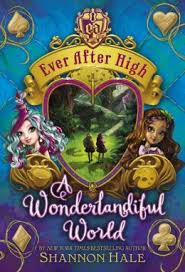 Next comes Shannon Hale’s middle-grade toy-tie-in series Ever After High, which began in 2013. Hale came out with two new volumes in 2014, and the three volumes hold the #7, #10, and #11 spots. Hale and her husband Dean also co-wrote an elementary grade book, The Princess in Black, which has received both strong reviews and good sales (#19). She started her very busy year with her first YA science fiction novel, Dangerous, and also wrote a volume in the middle grade Spirit Animals series. After years of writing excellent YA novels, it is nice to see her reach such a high level of popularity.
Next comes Shannon Hale’s middle-grade toy-tie-in series Ever After High, which began in 2013. Hale came out with two new volumes in 2014, and the three volumes hold the #7, #10, and #11 spots. Hale and her husband Dean also co-wrote an elementary grade book, The Princess in Black, which has received both strong reviews and good sales (#19). She started her very busy year with her first YA science fiction novel, Dangerous, and also wrote a volume in the middle grade Spirit Animals series. After years of writing excellent YA novels, it is nice to see her reach such a high level of popularity.
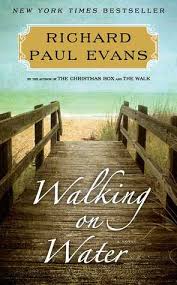 Others among the best-sellers are Richard Paul Evans, with a Christmas romance novel, a YA speculative, and the conclusion of the The Walk series. Christine Feehan with two fantasy romances, RaeAnne Thayne with several romance novels, and Brandon Mull with three YA/middle grade novels. Establishing a brand name is a huge part of sales, and it seems that once an author is able to popularize their names, they are quick to capitalize on it. Eight authors, Dashner, Card, Hale, Sanderson, Evans, Feehan, Thayne, and Mull, were the authors or co-authors of all 29 top-selling novels by Mormons. That is over 3.5 books per author!
Others among the best-sellers are Richard Paul Evans, with a Christmas romance novel, a YA speculative, and the conclusion of the The Walk series. Christine Feehan with two fantasy romances, RaeAnne Thayne with several romance novels, and Brandon Mull with three YA/middle grade novels. Establishing a brand name is a huge part of sales, and it seems that once an author is able to popularize their names, they are quick to capitalize on it. Eight authors, Dashner, Card, Hale, Sanderson, Evans, Feehan, Thayne, and Mull, were the authors or co-authors of all 29 top-selling novels by Mormons. That is over 3.5 books per author!
As is evident from the bestselling list, juvenile novels (YA and middle grade) continue to be the dominant genres in which Mormon authors are publishing. I have lost track of how many Mormon juvenile authors are being published nationally, but certainly it is in the dozens. Publishers especially seem to like new authors–there are several debut novels each year. Authors who don’t get past the mid-list after two or three books are often not renewed by their publisher, and are forced to turn to self-publishing.
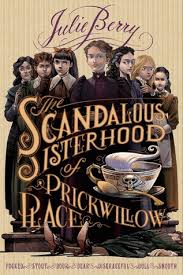 Looking at the well-reviewed middle grade books, besides those already mentioned, the one that stands out the most is Julie Berry’s The Scandalous Sisterhood of Prickwillow Place, a comic mystery about proper schoolgirls in a Victorian finishing school. They bury their dead headmistress in the back yard after she is mysteriously poisoned at Sunday dinner, and try to fool the community into thinking she is still alive. Publishers Weekly, in a starred review, said “The pupils’ attempts to convince the public that everything is normal at the school make for some hilarious scenes, and their efforts to find the murderer result in surprising encounters with suspicious (but often quite appealing) suspects. Romance blooms in unexpected places, and danger lurks around every corner in this delightfully farcical tale, full of twists and turns.”
Looking at the well-reviewed middle grade books, besides those already mentioned, the one that stands out the most is Julie Berry’s The Scandalous Sisterhood of Prickwillow Place, a comic mystery about proper schoolgirls in a Victorian finishing school. They bury their dead headmistress in the back yard after she is mysteriously poisoned at Sunday dinner, and try to fool the community into thinking she is still alive. Publishers Weekly, in a starred review, said “The pupils’ attempts to convince the public that everything is normal at the school make for some hilarious scenes, and their efforts to find the murderer result in surprising encounters with suspicious (but often quite appealing) suspects. Romance blooms in unexpected places, and danger lurks around every corner in this delightfully farcical tale, full of twists and turns.”
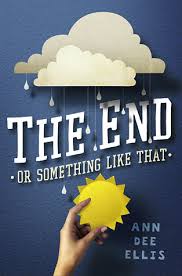 Another is Ann Dee Ellis’ The End or Something Like That, a mix of realism and fantasy about a girl dealing with her friend’s death, and the ghosts that visit her. The Center for Children’s Books wrote, “Ellis conveys intense ideas and emotions—from changing relationships to body image to budding romance to deep loss—in spare and exacting prose believable as the internal monologue of a protagonist who struggles to put voice to her feelings. Emmy makes a sympathetic and nuanced character, frustrating but never alienating as she clumsily moves through her grief while dealing with the peers and adults, portrayed here with observant precision, who make up her life. This is a sad novel, but not one wallowing in its misery; rather, with understated humor, compassion, and even-handedness in its staccato sentences, it takes readers on a meaningful journey into grief and uncertainty—and gently leads them back to safety.”
Another is Ann Dee Ellis’ The End or Something Like That, a mix of realism and fantasy about a girl dealing with her friend’s death, and the ghosts that visit her. The Center for Children’s Books wrote, “Ellis conveys intense ideas and emotions—from changing relationships to body image to budding romance to deep loss—in spare and exacting prose believable as the internal monologue of a protagonist who struggles to put voice to her feelings. Emmy makes a sympathetic and nuanced character, frustrating but never alienating as she clumsily moves through her grief while dealing with the peers and adults, portrayed here with observant precision, who make up her life. This is a sad novel, but not one wallowing in its misery; rather, with understated humor, compassion, and even-handedness in its staccato sentences, it takes readers on a meaningful journey into grief and uncertainty—and gently leads them back to safety.”
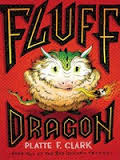 Other well-received middle grade books include Jennifer A. Nielsen’s trilogy-ending fantasy The Shadow Throne, Kimberley Griffiths Little’s Louisiana bayou-based mystery/fantasy Time of the Fireflies, Platte F. Clark’s comic fantasy Fluff Dragon, and Chad Morris’ time travel school fantasy Avatar Battle.
Other well-received middle grade books include Jennifer A. Nielsen’s trilogy-ending fantasy The Shadow Throne, Kimberley Griffiths Little’s Louisiana bayou-based mystery/fantasy Time of the Fireflies, Platte F. Clark’s comic fantasy Fluff Dragon, and Chad Morris’ time travel school fantasy Avatar Battle.
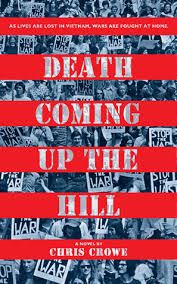 Among young non-speculative adult novels, especially well-reviewed titles include: Chris Crowe’s Death Coming Up the Hill, about a high school boy in 1968 struggling with family and social issues of the time, particularly the Vietnam War. The novel is written entirely in haiku poems. Kasie West’s On the Fence, a teen romantic comedy that goes beyond the expected clichés. Kimberley Griffiths Little’s Forbidden, a historical romance about a girl who is part of a Mesopotamian nomadic tribe, sometime after Abraham, and an unwanted betrothal. Carol Lynch Williams’ Signed, Skye Harper, a teen romance set in 1972, with, according to Kirkus, takes “beautifully distinctive characters and gives them a terrifically original plot with moments of humor and quiet poignancy”. Jolene Perry’s Stronger Than You Know, about a girl who frees herself from years of neglect and physical abuse at the hands of her mother and her mother’s boyfriend. Publishers Weekly says, “Perry deftly avoids the problem-novel label thanks to complex characters and a well-structured plot.” Jessica Martinez’s thriller Kiss Kill Vanish is the story of a teen who leaves her privileged family and goes on the lamb after her boyfriend’s family conspires to murder someone. Kirkus wrote, “Compelling characters and a fast-paced, unpredictable plot make this thriller a genuine joy ride.”
Among young non-speculative adult novels, especially well-reviewed titles include: Chris Crowe’s Death Coming Up the Hill, about a high school boy in 1968 struggling with family and social issues of the time, particularly the Vietnam War. The novel is written entirely in haiku poems. Kasie West’s On the Fence, a teen romantic comedy that goes beyond the expected clichés. Kimberley Griffiths Little’s Forbidden, a historical romance about a girl who is part of a Mesopotamian nomadic tribe, sometime after Abraham, and an unwanted betrothal. Carol Lynch Williams’ Signed, Skye Harper, a teen romance set in 1972, with, according to Kirkus, takes “beautifully distinctive characters and gives them a terrifically original plot with moments of humor and quiet poignancy”. Jolene Perry’s Stronger Than You Know, about a girl who frees herself from years of neglect and physical abuse at the hands of her mother and her mother’s boyfriend. Publishers Weekly says, “Perry deftly avoids the problem-novel label thanks to complex characters and a well-structured plot.” Jessica Martinez’s thriller Kiss Kill Vanish is the story of a teen who leaves her privileged family and goes on the lamb after her boyfriend’s family conspires to murder someone. Kirkus wrote, “Compelling characters and a fast-paced, unpredictable plot make this thriller a genuine joy ride.”
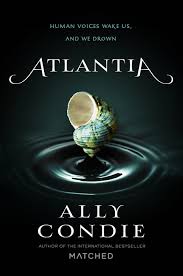 As for young adult speculative novels, Ally Condie’s Atlantia, her first novel after her wildly successful Matched series, is a stand-alone dystopian novel based on Hans Christian Andersen’s “The Little Mermaid”. It received mixed reviews and not nearly as robust sales as her earlier series. Scott Renshaw wrote, “It may not be a propulsive page-turner, but it’s something perhaps rarer in the world of young-adult fiction: a genre work that feels more like a contemporary character study, following a young woman navigating the tricky business of finding her own voice.” It was named one of Barnes & Noble Best Teen Books of 2014.
As for young adult speculative novels, Ally Condie’s Atlantia, her first novel after her wildly successful Matched series, is a stand-alone dystopian novel based on Hans Christian Andersen’s “The Little Mermaid”. It received mixed reviews and not nearly as robust sales as her earlier series. Scott Renshaw wrote, “It may not be a propulsive page-turner, but it’s something perhaps rarer in the world of young-adult fiction: a genre work that feels more like a contemporary character study, following a young woman navigating the tricky business of finding her own voice.” It was named one of Barnes & Noble Best Teen Books of 2014.
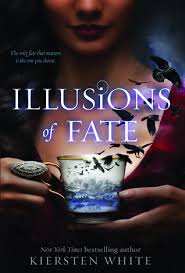 Kiersten White had three YA novels published in 2014, the paranormal fantasy sequel Perfect Lies, the fantasy novel Illusions of Fate, and a paranormal mystery/graphic novel hybrid called In the Shadows. The last was a collaboration with the graphic artist Jim Di Bartolo, combining two stories, Di Bartolo’s horror-tinged adventure and White a horror-tinged romance. The Bulletin for the Center for Children’s Books wrote, “the thick lines, dark notes, and splashes of lives that play out in the arresting illustrations complement the intricate, everyday feeling of the prose narrative. If readers may leave slightly unsure what the story actually was, there is still much to contemplate and some awesome atmospherics to enjoy, and there is plenty to warrant a repeat read to continue puzzling it all out.”
Kiersten White had three YA novels published in 2014, the paranormal fantasy sequel Perfect Lies, the fantasy novel Illusions of Fate, and a paranormal mystery/graphic novel hybrid called In the Shadows. The last was a collaboration with the graphic artist Jim Di Bartolo, combining two stories, Di Bartolo’s horror-tinged adventure and White a horror-tinged romance. The Bulletin for the Center for Children’s Books wrote, “the thick lines, dark notes, and splashes of lives that play out in the arresting illustrations complement the intricate, everyday feeling of the prose narrative. If readers may leave slightly unsure what the story actually was, there is still much to contemplate and some awesome atmospherics to enjoy, and there is plenty to warrant a repeat read to continue puzzling it all out.”
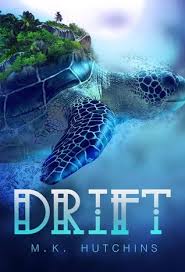 Other Young Adult speculative novels that have received strong reviews include: Dan Wells’ Ruins, the third in his dystopian/action series Partials. J. R. Johansson’s Paranoia is the second in her paranormal/horror Night Walker series, about a young man who is learning how to enter the dreams of the last person he makes eye contact with before he goes to sleep. Janette Rallison’s Son of War, Daughter of Chaos is a self-published paranormal about a high school girl drawn into an Egyptian mythology-based struggle. Finally, three debut novels. Charlie Holmberg’s The Paper Magician is a steampunk fantasy steampunk romance, is set in an alternate early 20th century England where schools of magic are as common as secondary school. Shallee McArthur’s The Unhappening of Genesis Lee is a dystopian about a group of people with genetically modified, storable memories. M. K. Hutchins’ Drift is a fantasy based on Mayan mythology, about cultures that live on the backs of giant turtles.
Other Young Adult speculative novels that have received strong reviews include: Dan Wells’ Ruins, the third in his dystopian/action series Partials. J. R. Johansson’s Paranoia is the second in her paranormal/horror Night Walker series, about a young man who is learning how to enter the dreams of the last person he makes eye contact with before he goes to sleep. Janette Rallison’s Son of War, Daughter of Chaos is a self-published paranormal about a high school girl drawn into an Egyptian mythology-based struggle. Finally, three debut novels. Charlie Holmberg’s The Paper Magician is a steampunk fantasy steampunk romance, is set in an alternate early 20th century England where schools of magic are as common as secondary school. Shallee McArthur’s The Unhappening of Genesis Lee is a dystopian about a group of people with genetically modified, storable memories. M. K. Hutchins’ Drift is a fantasy based on Mayan mythology, about cultures that live on the backs of giant turtles.
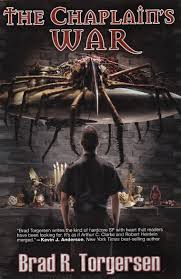 Looking at other adult speculative fiction besides Brandon Sanderson, Brad Torgersen’s The Chaplain’s War is his debut novel, coming after he has won or been nominated for several writing awards for his science fiction short fiction. It is an expansion of two earlier works, about a chaplain serving in Earth’s space fleet is trapped behind enemy lines where he struggles for both personal survival and humanity’s future. One reviewer wrote, “The topic of religion and beliefs is not often (anymore) discussed in science fiction, but Torgersen incorporates this exploration in a wonderful way which doesn’t preach and yet delves deeply into why people hold their beliefs and how people come into their beliefs. I was extremely satisfied at the end, how the issues and conflicts were resolved left me wanting more because I cared about the characters and found the world they inhabited to be fascinating.”
Looking at other adult speculative fiction besides Brandon Sanderson, Brad Torgersen’s The Chaplain’s War is his debut novel, coming after he has won or been nominated for several writing awards for his science fiction short fiction. It is an expansion of two earlier works, about a chaplain serving in Earth’s space fleet is trapped behind enemy lines where he struggles for both personal survival and humanity’s future. One reviewer wrote, “The topic of religion and beliefs is not often (anymore) discussed in science fiction, but Torgersen incorporates this exploration in a wonderful way which doesn’t preach and yet delves deeply into why people hold their beliefs and how people come into their beliefs. I was extremely satisfied at the end, how the issues and conflicts were resolved left me wanting more because I cared about the characters and found the world they inhabited to be fascinating.”
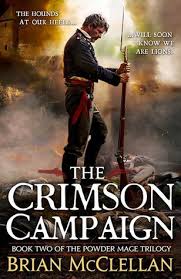 Brian McClellan’s The Crimon Campaign is the second in his epic flintlock fantasy series about an alternative French Revolution with wizards and magic. Kirkus wrote, “While less relentlessly inventive than the inaugural volume it is still impressively distinctive and pungent, with solid plotting and exceptional action sequences. A reliably rewarding installment that will keep appetites whetted for the conclusion.” Tracy and Laura Hickman’s Unwept is the start of a gothic fantasy series. Library Journal wrote, “Creepy imagery and the withholding of information from both Ellis and the reader keep the pages turning, even if it is not always clear what’s going on within the plot.” Reader reviews were fairly negative, turned off by the creepiness and slow pace. Orson Scott Card produced Vistors, the conclusion to the YA fantasy/science fiction Pathfinder series, and Earth Awakens, in collaboration with Aaron Johnson, the third in the Enderverse First Formic War series. Monster Hunter Nemesis is the fifth in Larry Correia’s popular and pulpy action/fantasy series.
Brian McClellan’s The Crimon Campaign is the second in his epic flintlock fantasy series about an alternative French Revolution with wizards and magic. Kirkus wrote, “While less relentlessly inventive than the inaugural volume it is still impressively distinctive and pungent, with solid plotting and exceptional action sequences. A reliably rewarding installment that will keep appetites whetted for the conclusion.” Tracy and Laura Hickman’s Unwept is the start of a gothic fantasy series. Library Journal wrote, “Creepy imagery and the withholding of information from both Ellis and the reader keep the pages turning, even if it is not always clear what’s going on within the plot.” Reader reviews were fairly negative, turned off by the creepiness and slow pace. Orson Scott Card produced Vistors, the conclusion to the YA fantasy/science fiction Pathfinder series, and Earth Awakens, in collaboration with Aaron Johnson, the third in the Enderverse First Formic War series. Monster Hunter Nemesis is the fifth in Larry Correia’s popular and pulpy action/fantasy series.
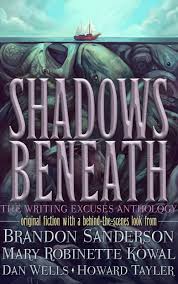 Members of the Writing Excuses team of Brandon Sanderson, Mary Robinette Kowal, Dan Wells, Howard Tayler were involved two speculative fiction anthologies. One, Shadows Beneath: A Writing Excuses Anthology, features short fiction by all four authors, as well as essays on the writing of each story, and other essays and advice for authors.Brandon Sanderson and Dan Wells also organized a speculative fiction anthology called Altered Perceptions, to benefit the author Robison Wells, one of the main creators of the Whitney Awards, who is facing high medical bills because of his mental illnesses. Robison Wells, by the way, produced Dead Zone, the second in his YA science fiction Blackout series.
Members of the Writing Excuses team of Brandon Sanderson, Mary Robinette Kowal, Dan Wells, Howard Tayler were involved two speculative fiction anthologies. One, Shadows Beneath: A Writing Excuses Anthology, features short fiction by all four authors, as well as essays on the writing of each story, and other essays and advice for authors.Brandon Sanderson and Dan Wells also organized a speculative fiction anthology called Altered Perceptions, to benefit the author Robison Wells, one of the main creators of the Whitney Awards, who is facing high medical bills because of his mental illnesses. Robison Wells, by the way, produced Dead Zone, the second in his YA science fiction Blackout series.
Larry Correia, Brad Torgersen (twice), Brandon Sanderson, Dan Wells, and the Writing Excuses group (the four authors and Jordan Sanderson) were nominated for 2014 Hugo awards. None of them won awards, and Torgersen and Correia protested what they saw as a political bias among the voting community. Eric James Stone explained some of the controversies around the nominations.
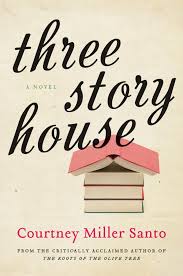 One more national novel was Courtney Miller Santo’s Three Story House, a story about the lives of three cousins nearing thirty, working on renovating a historic Memphis house together. Publishers Weekly wrote, “Santo turns home improvement into a metaphor for self-discovery in this well-crafted novel . . . it skillfully draws readers into its fictional world. Fans of historic homes will appreciate Santo’s focus on the number of repairs beloved old houses often require.”
One more national novel was Courtney Miller Santo’s Three Story House, a story about the lives of three cousins nearing thirty, working on renovating a historic Memphis house together. Publishers Weekly wrote, “Santo turns home improvement into a metaphor for self-discovery in this well-crafted novel . . . it skillfully draws readers into its fictional world. Fans of historic homes will appreciate Santo’s focus on the number of repairs beloved old houses often require.”
In literary criticism, some key essays that appeared in 2014 include Jack Harrell’s “Toward a Mormon Literary Theory” (BYU Studies Quarterly 53.3), Michael Austin’s “The Brief History and Perpetually Exciting Future of Mormon Literary Studies” (Mormon Studies Review #2), and Scott Hales, “Still Dawning?: A Response to Michael Austin” (December, A Motley Vision). Another interesting article on writing was Publishers Weekly’s “Utah’s Children’s Authors Build a Community”, which talked about how a close-knit community of children’s book authors and illustrators from Utah has emerged in the past decade, “due in no small part to author Rick Walton’s leadership.”
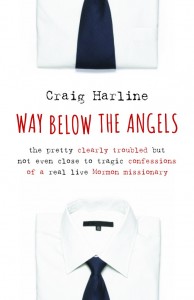 Among well-reviewed personal essay/memoir books that appeared in 2014 were On Loss and Living Onward: Collected Voices for the Grieving and Those Who Would Mourn With Them, a multi-author anthology edited by Melissa Dalton-Bradford. Eric Freeze’s Hemmingway on a Bike, a collection of essays about France, parenting, and odd sports. Craig Harline’s Way Below the Angels: The Pretty Clearly Troubled but Not Even Close to Tragic Confessions of a Real Live Mormon Missionary, a memoir about Harline’s experience as a missionary in Belgium in the 1970s, which has received strong reviews both from
Among well-reviewed personal essay/memoir books that appeared in 2014 were On Loss and Living Onward: Collected Voices for the Grieving and Those Who Would Mourn With Them, a multi-author anthology edited by Melissa Dalton-Bradford. Eric Freeze’s Hemmingway on a Bike, a collection of essays about France, parenting, and odd sports. Craig Harline’s Way Below the Angels: The Pretty Clearly Troubled but Not Even Close to Tragic Confessions of a Real Live Mormon Missionary, a memoir about Harline’s experience as a missionary in Belgium in the 1970s, which has received strong reviews both from  Mormons and non-Mormons, including a starred review from Publishers Weekly.
Mormons and non-Mormons, including a starred review from Publishers Weekly.
As for poetry collections, 2014 saw Colin P. Douglas’First Light, First Water, Kristen Eliason’s Picture Dictionary, Kimberly Johnson’s Uncommon Prayer, and Laura Stott’s In the Museum of Coming and Going.
Finally, a few words in memory of Mormon artists we lost in 2014.
 Ultra Violet, the artistic name of Isabelle Collin Dufresne, passed away on June 14 at the age of 78. Dufresne was an artist and film actress closely associated with Andy Warhol and The Factory. In Famous for 15 Minutes: My Years With Andy Warhol, her 1988 memoir, she wrote about her turn to religion after a breakdown, resulting in her joining the Church in 1981. Here are remembrances by Mormon New Yorkers Kent Larson and Glen Nelson.
Ultra Violet, the artistic name of Isabelle Collin Dufresne, passed away on June 14 at the age of 78. Dufresne was an artist and film actress closely associated with Andy Warhol and The Factory. In Famous for 15 Minutes: My Years With Andy Warhol, her 1988 memoir, she wrote about her turn to religion after a breakdown, resulting in her joining the Church in 1981. Here are remembrances by Mormon New Yorkers Kent Larson and Glen Nelson.
 Science fiction author Alan Lickiss passed away from cancer on November 8. Alan’s first published story (co-authored with his wife Rebecca) was published in The Leading Edge in 1996. Seven other stories were published since then, including two stories in Analog.
Science fiction author Alan Lickiss passed away from cancer on November 8. Alan’s first published story (co-authored with his wife Rebecca) was published in The Leading Edge in 1996. Seven other stories were published since then, including two stories in Analog.
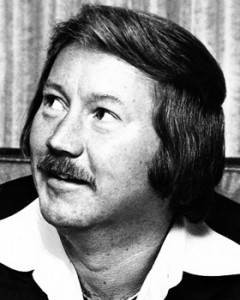 Glen A. Larson, a television writer-producer whose work included Quincy M.E., Magnum, P.I., Battlestar Galactica, Knight Rider and The Fall Guy, died on November 14 at the age of 77. The cause was complications of esophageal cancer. Larson infused the science fiction series Battlestar Galactica with many Mormon references. In the late 1950s Larson was a member of the Four Preps, which earned three gold records.
Glen A. Larson, a television writer-producer whose work included Quincy M.E., Magnum, P.I., Battlestar Galactica, Knight Rider and The Fall Guy, died on November 14 at the age of 77. The cause was complications of esophageal cancer. Larson infused the science fiction series Battlestar Galactica with many Mormon references. In the late 1950s Larson was a member of the Four Preps, which earned three gold records.
 Emma Lou Thayne, a giant in Mormon literature, passed away on December 6 at the age of 90. She was a noted author of poetry, fiction, essays, hymns, and travel stories, as well as her work as an educator, coach, LDS Young Women’s board member, and Deseret News board member.
Emma Lou Thayne, a giant in Mormon literature, passed away on December 6 at the age of 90. She was a noted author of poetry, fiction, essays, hymns, and travel stories, as well as her work as an educator, coach, LDS Young Women’s board member, and Deseret News board member.

I always look forward to your Mormon Lit year in review posts, Andrew! They sum things up so nicely. I love learning about new books by LDS authors, especially when I didn’t know the authors were LDS. Thanks for doing this every year!
Really enjoyed this. Thanks for taking the time to include so many details.
.
Good to be reminded of a few books I meant to read then forgot about. What a year it’s been!
Thanks for this thorough summary! Great stuff.